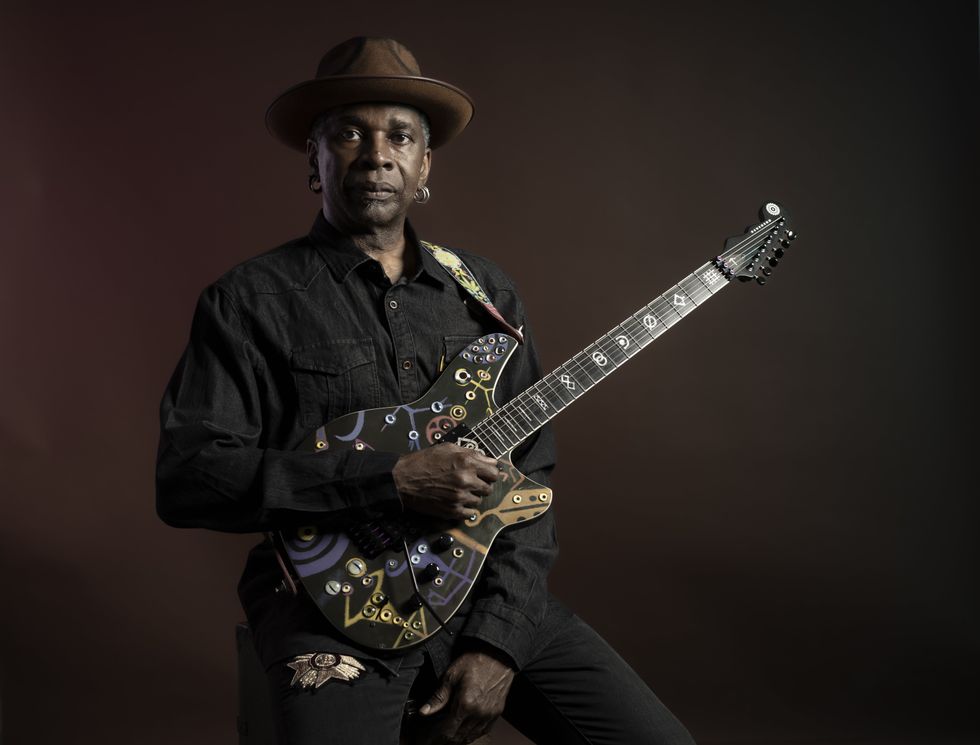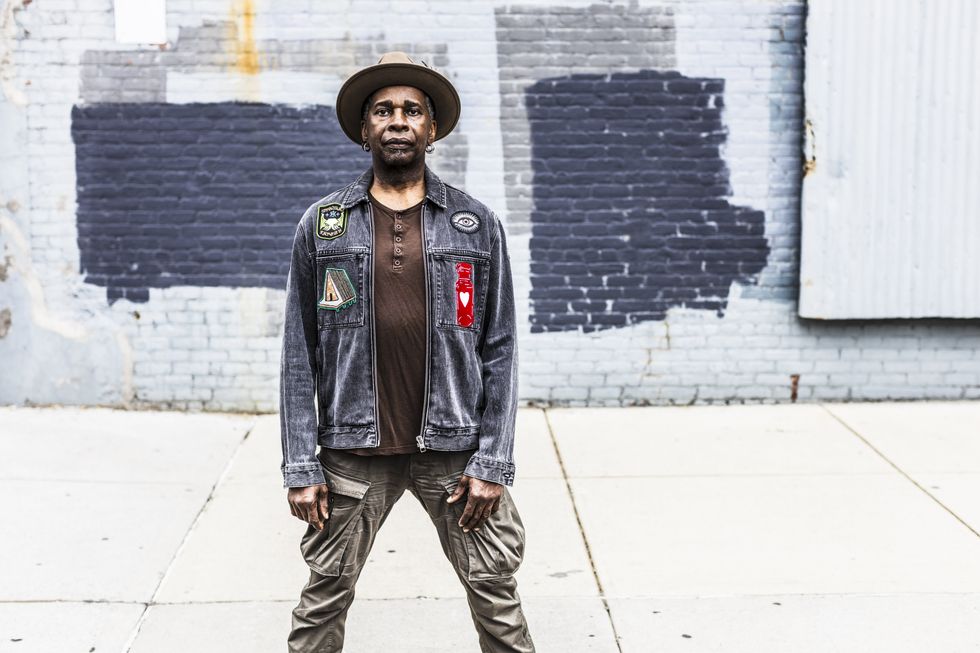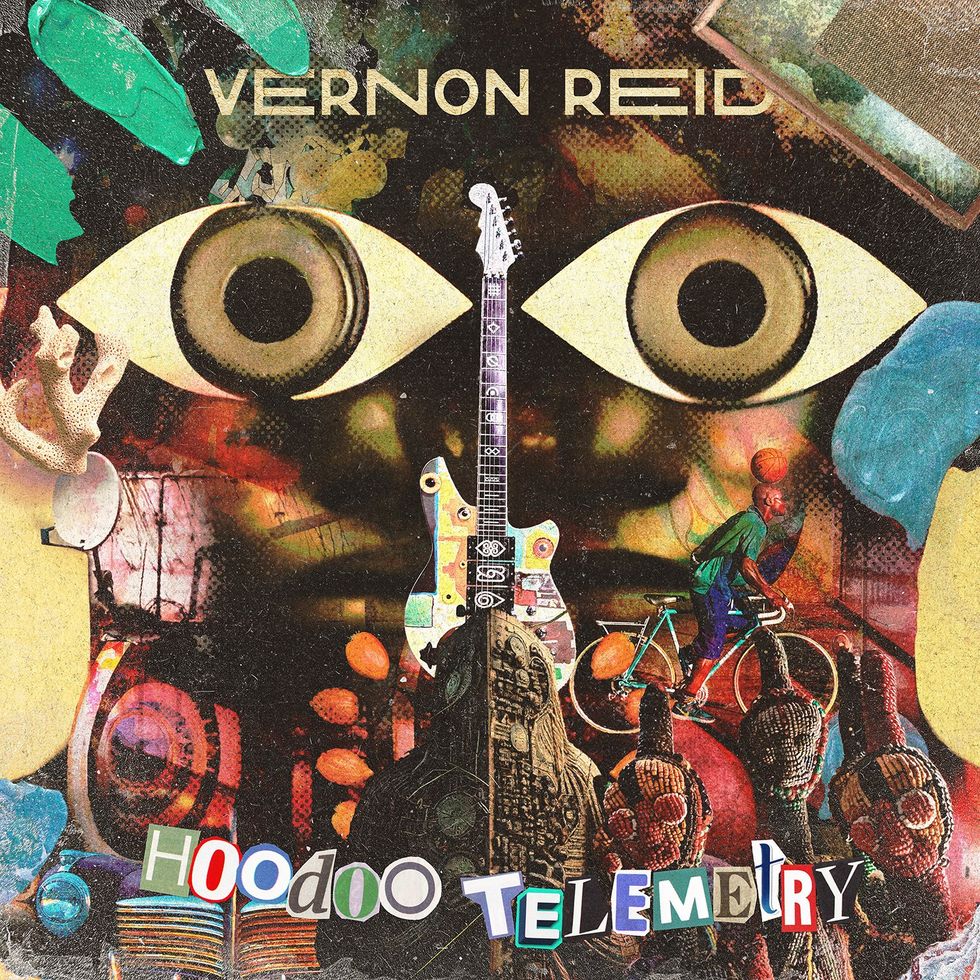NEW YORK CITY–There’s a low, sustained tone that David Gilmour extracts from his Stratocaster at the beginning of Pink Floyd’s “Sorrow.” It’s the intimidating growl of a robotic tiger–or, more realistically, a blend of low-string sustain, snarling overdrive from a Big Muff, and delay that saturates the air and seems to expand into every bit of open space. It’s almost overpowering in its intensity, but it is also deeply beautiful.
That tone, and so many of the other sounds that Gilmour has conjured in his 46 years of recording with Pink Floyd and as a solo artist, inspired me to leave Nashville to attend the first concert of Gilmour’s five-night stand at Madison Square Garden, on November 4. I’d been lucky enough to catch Gilmour’s tour supporting 1984’s About Face and two later Pink Floyd concerts, but the guitarist is 78 this year, so I felt that the 21 dates he’s playing in a mere four cities might be my last chance to be in the same room with all of his extraordinary tones. Plus, Pink Floyd, and especially Gilmour’s solo recordings and his brilliant Live at Pompeii concert film, was my wife, Laurie’s, and my refuge during the Covid lockdown. This was our opportunity to experience the sorcerer at work in one of his temples, where he and Pink Floyd first played in 1977.
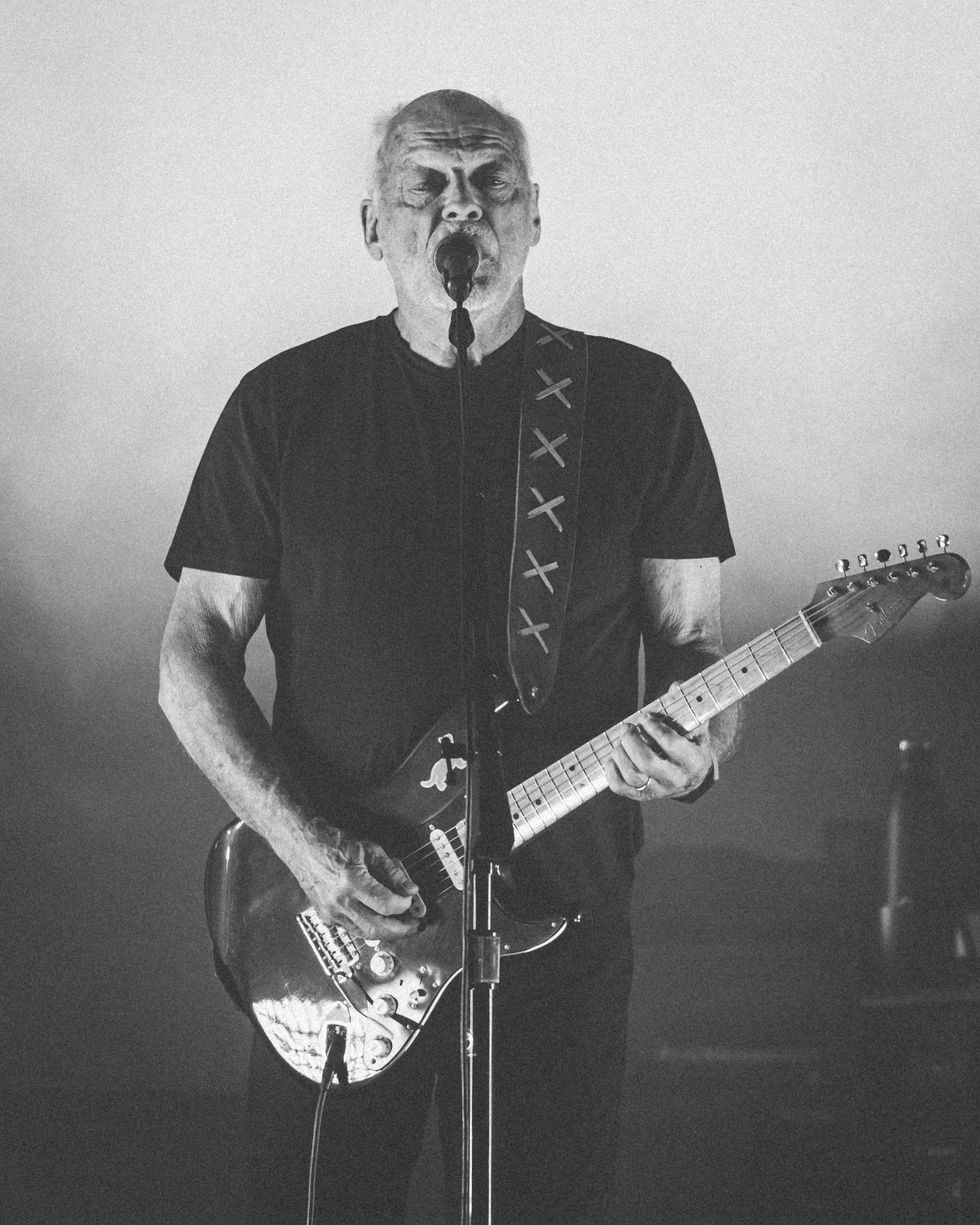
Gilmour wields his Black Cat Strat, which he also played on Luck and Strange’s opener, “Black Cat,” in the studio.
Photo by Emma Wannie/MSGE
Was it worth the price of two concert tickets, flights, two nights in a Midtown hotel, and a subway ride? If you need to ask, it’s likely you’re not as familiar with Gilmour’s playing as I suggest that you should be. For guitarists, outside-the-box musical thinkers, and lovers of exceptional songwriting–and even concert lighting effects and live sound–this show was a perfect 10. Gilmour and his ensemble, including his daughter Romany, performed a well-chosen set of tunes by Pink Floyd and from Gilmour’s solo work, including his recent album Luck and Strange, which is more about composition than guitar exposition. Live, this was not the case. “Luck and Strange,” “A Single Spark,” and others from the album were expanded to include 6-string excursions that–in his signature style–took the lyrics as their inspiration and expanded their emotional architecture.
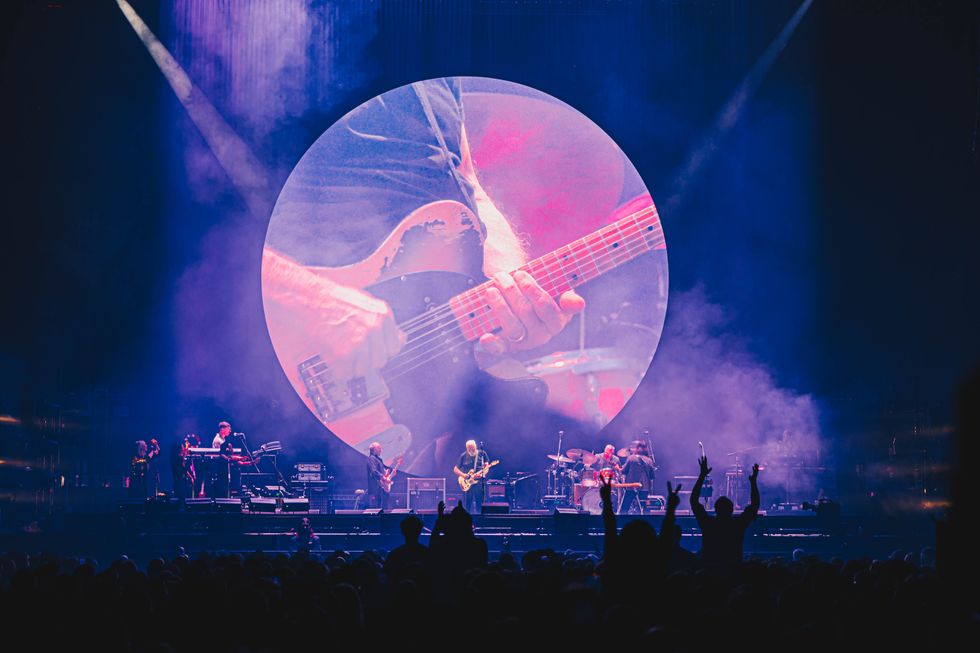
A close-up of Gilmour’s famed Workmate guitar, a 1955 Fender Esquire that once belonged to Seymour Duncan.
Photo by Emma Wannie/MSGE
Repeatedly, Gilmour displayed his ability to play the perfect parts, and especially solos, for each song. Some, of course, like “Time,” require sticking to text, but his expansions of “Breathe” and other numbers incorporated subtle improvisations dappled by pitch-changing, his emotive string bending, and numerous shifts in tone and phrasing that nonetheless always respected his unmistakable core sound. In Nashville, a frequent compliment is that a musician “always plays the perfect part.” For me, that’s a warning that I’m probably going to hear very professional and predictable playing all night long, and that’s usually boring. But Gilmour’s ear-opening sounds and phrases are constantly peppered with surprises–a hallmark of his characterful virtuosity. In the first of his Garden shows, he stepped outside the box while always respecting its contents, and it was a pleasure to hear him repeatedly practice that high art.
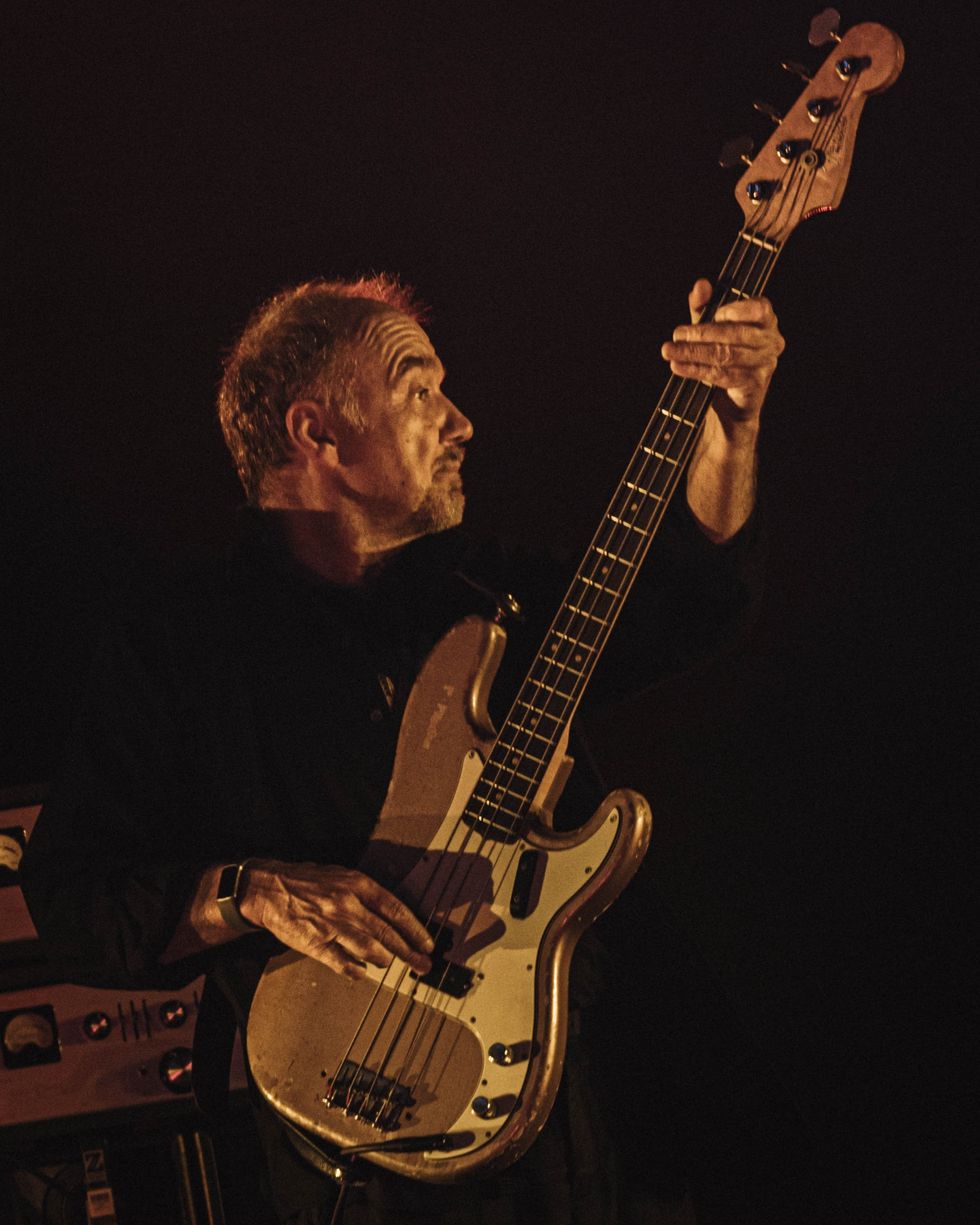
Guy Pratt remarked, while speaking to the audience before the show, that his first gig at MSG with Gilmour had been 37 years and one day earlier. Live, it was clear that Pratt is Gilmour’s right-hand man, as he set up cues for the other players.
Photo by Emma Wannie/MSGE
A pre-tour rumor was that Gilmour would not be playing any Pink Floyd numbers. That seemed unlikely, given his role as the composer and vocalist of so many of the band’s showcase songs. And, indeed, “Speak to Me,” “Breathe,” “Time,” “Marooned” (with its pitch-defying solo), “Wish You Were Here,” “High Hopes,” “Sorrow,” “A Great Day for Freedom,” “The Great Gig in the Sky,” “Coming Back to Life,” and “Comfortably Numb” were all present during the roughly two-and-a-half hours of music. What seemed remarkable throughout was not only the perfection of Gilmour’s playing but his ability to still hit every vocal high note with the same energy and accuracy of the original recordings, including his superb recreation of the scatting in “Wish You Were Here.”
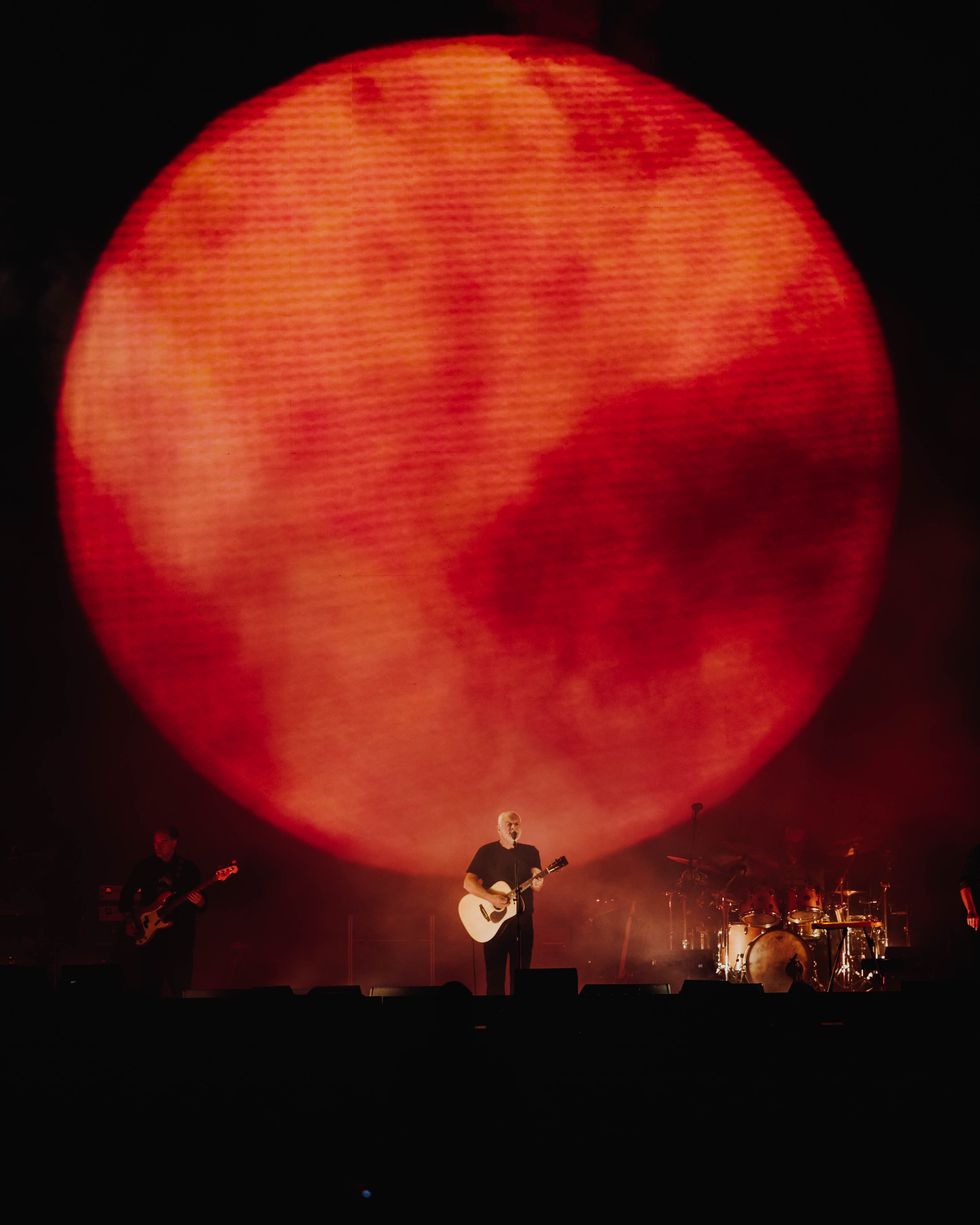
Gilmour’s acoustic guitar, especially on “Wish You Were Here,” sparkled with clarity and articulation, and his scatting on that song proved that at 78 he can still summon the power and precision to hit the high vocal notes.
Photo by Emma Wannie/MSGE
“Wish You Were Here” was his first acoustic guitar excursion of the concert, and he and supporting guitarist Ben Worsley made the song a trip in the Wayback Machine, effortlessly conjuring the introduction’s vibrant appeal and deep emotionalism. Their acoustic instruments sounded crisp and resonant through the arena-sized PA, which should not have been surprising given Gilmour and Pink Floyd’s high standards for live sound. And all night, Gilmour’s vocals enjoyed the same clarity, making every lyric understandable, which is quite a feat for any large-hall show. The only quibble is that the drums echoed off the Garden’s back wall, which, given its 19,500 capacity, was on par.
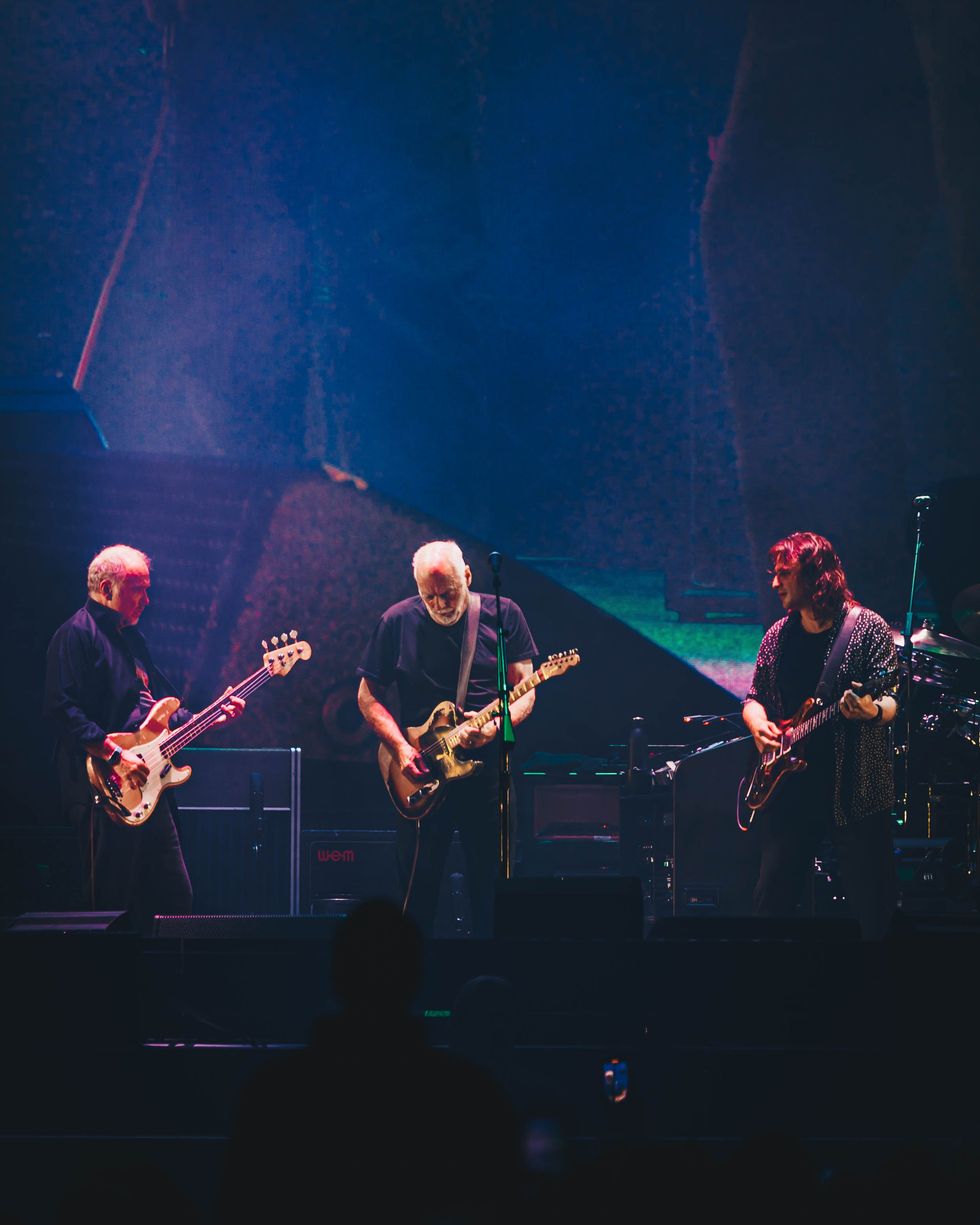
Guy Pratt, David Gilmour, and Ben Worsley keeping the rock in arena rock. In addition to his Fender Jazz Bass, Pratt also played an Ernie Ball Music Man Stingray, and an upright. For electric guitar, Worsley slung a PRS S2 SSH.
Photo by Emma Wannie/MSGE
Romany Gilmour played a vital role in the show, with her voice navigating the Celtic-influenced melody of “Between Two Points,” from Luck and Strange, before joining the already formidable voices of Louise Marshall, and Charlie and Hattie Webb, in the band’s chorus. All four took turns singing lead on Dark Side of the Moon’s wordless masterpiece “The Great Gig in the Sky,” as Marshall played piano and Gilmour took one of his turns on the table-steel guitar.
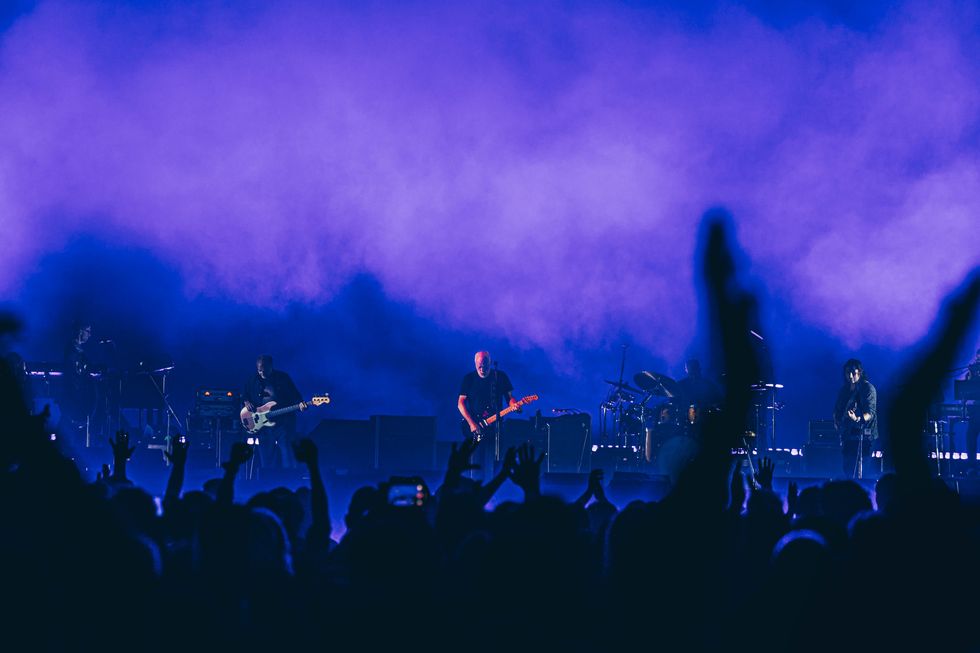
A crowd’s-eye view, with lighting-enhanced stage fog. At right, just out of frame, is famed keyboardist Greg Phillinganes, who first joined Gilmour’s ensemble as part of the Rattle That Lock tour of Europe and appears in the Live in Pompeii concert film.
Photo by Emma Wannie/MSGE
“In Any Tongue,” from Gilmour’s 2014 album Rattle That Lock, was, of course, a musical highlight, ignited by that grizzly tone, but furthered by expressive, powerhouse solos from both Gilmour and Worsley. The song’s anti-war theme was enhanced by the same back-projected, heart-breaking video shown in 2016’s Live in Pompeii film, which conveys the idea that military violence spares neither the often-reluctant invaders nor the invaded. And last, of course, came “Comfortably Numb,” with Gilmour’s holy grail guitar solos, perfectly executed as he and the band played from behind an allusive wall of light. With their deep, idiosyncratic bends, rich, howling midrange, and his perfect, vibrato-laden bends, squealing harmonics, touch, and phrasing, these solos were the ultimate 6-string microphone drop.
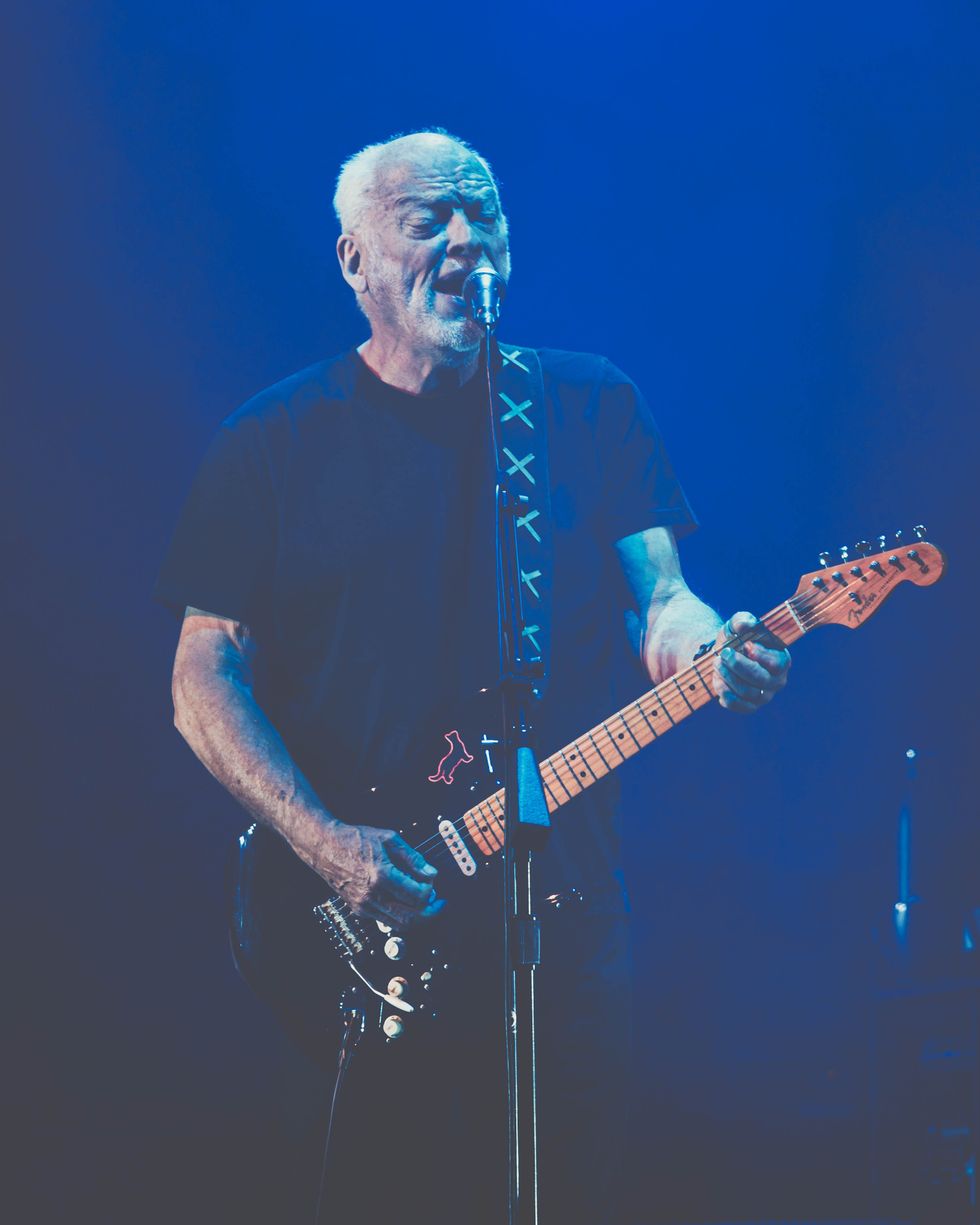
Gilmour and his Black Cat Strat–partners for the concert’s closing number, “Comfortably Numb,” from Pink Floyd’s The Wall.
Photo by Emma Wannie/MSGE
If that was my last opportunity to hear Gilmour live, it’s understandable. He’s a legend who has earned his status through nearly a half-century of remarkable playing and composing. He has no need to create or perform on any terms beyond his own. I’m simply happy to have been able to bear witness, and to share the experience with you.
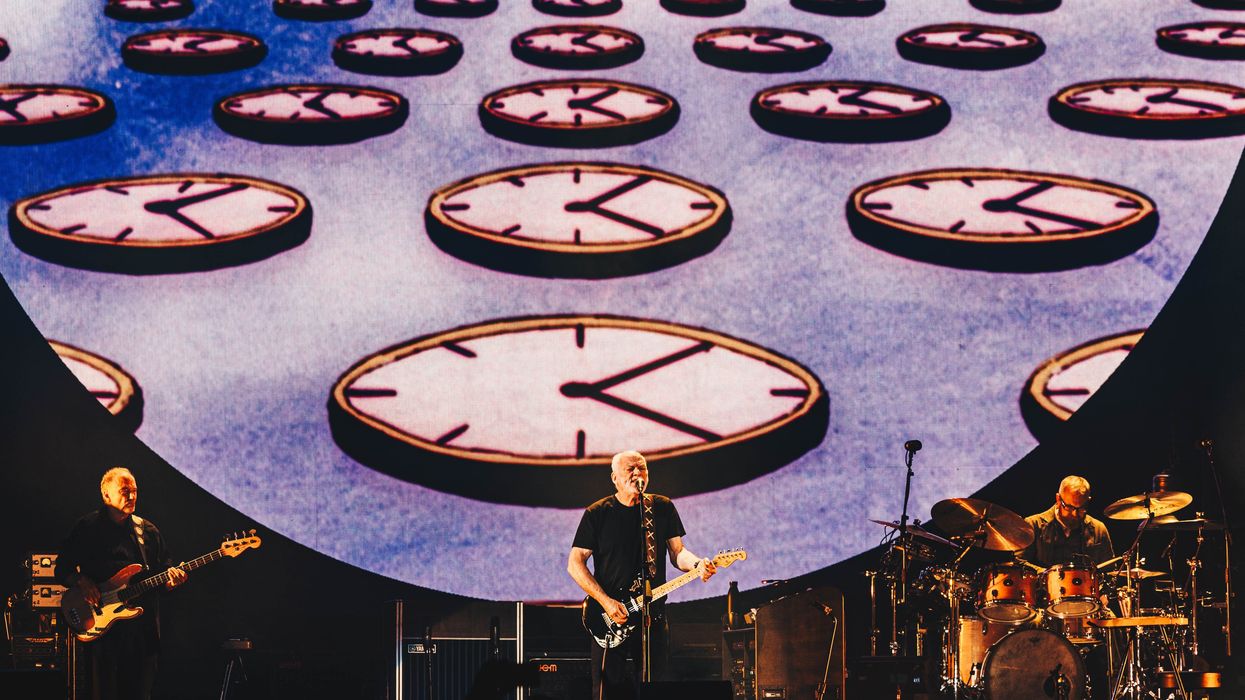










![Rig Rundown: AFI [2025]](https://www.premierguitar.com/media-library/youtube.jpg?id=62064741&width=1245&height=700&quality=70&coordinates=0%2C0%2C0%2C0)

![Devon Eisenbarger [Katy Perry] Rig Rundown](https://www.premierguitar.com/media-library/youtube.jpg?id=61774583&width=1245&height=700&quality=70&coordinates=0%2C0%2C0%2C0)















